Pruning shrubs has always been one of my favourite garden occupations. It’s satisfying to clear away the dead wood (literally) — and when the work is done, you can see what is there. It’s a practical activity as well an aesthetic one. My aim may be to shape a shrub so that it looks its very best, but in the process I am improving the health of the shrub, giving it room to breathe and light to live by. As an activity, pruning is more rewarding than weeding — it’s even more rewarding than finally cleaning out that kitchen drawer where everything that has no place to go, goes. It makes you feel good about the world, and about yourself. Or so it does for me.
Fear of pruning is common for many gardeners, but most shrubs are forgiving. If you make a mistake, next year’s growth will compensate. And yet there are right ways and wrong ways to prune.
A group of keen gardeners gathered this week at Glen Villa for a pruning workshop. As Jeff Young, our instructor, counselled, there are hundreds of wrong pruning cuts and only two right ones. Using shrubs in the Lower Garden as illustrations, he demonstrated both the right and the wrong ways. And he gave names to the two types of ‘right’ cuts: collar cuts and stem cuts.
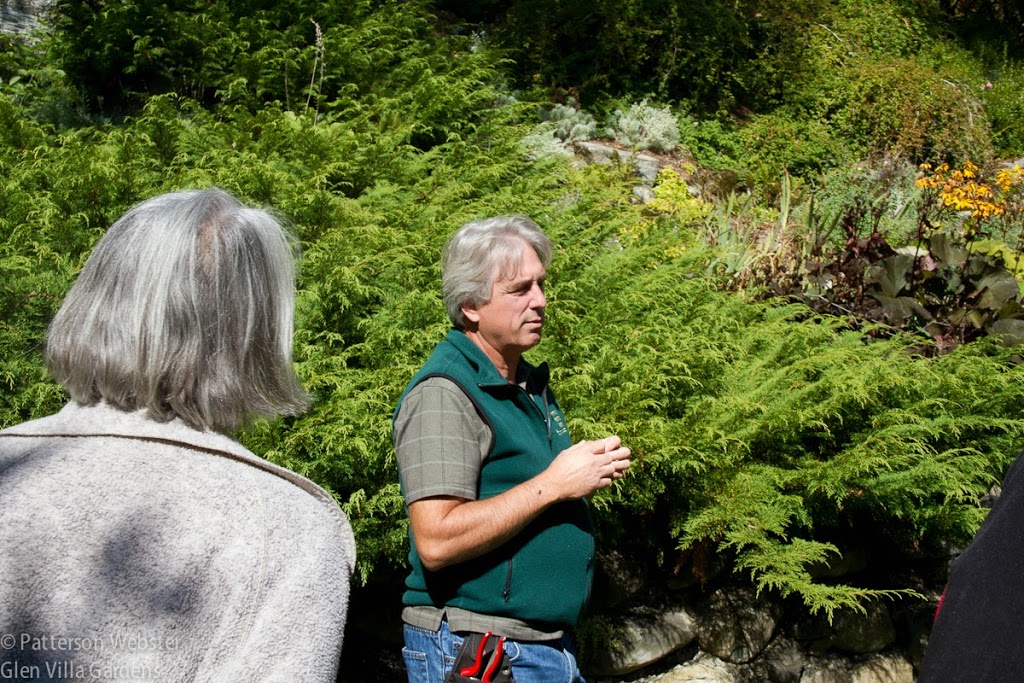 |
| The Good: Jeff Young is a University of Vermont Master Gardener who specializes in lilacs. He teaches workshops across Canada and the U.S. on landscaping and gardening. |
To make a proper collar cut look for the rings around a branch, where it connects to the trunk or other branch. Jeff described these rings (rather like the folds on an elephant’s legs) as the candleholder, and the branch as the candle. A proper pruning cut does not cut into the candleholder, but removes the candle. Cutting too close damages the stem tissue which otherwise would seal the wound and leaves the shrub vulnerable to infection. Cutting too far from the collar leaves an unsightly branch stub.
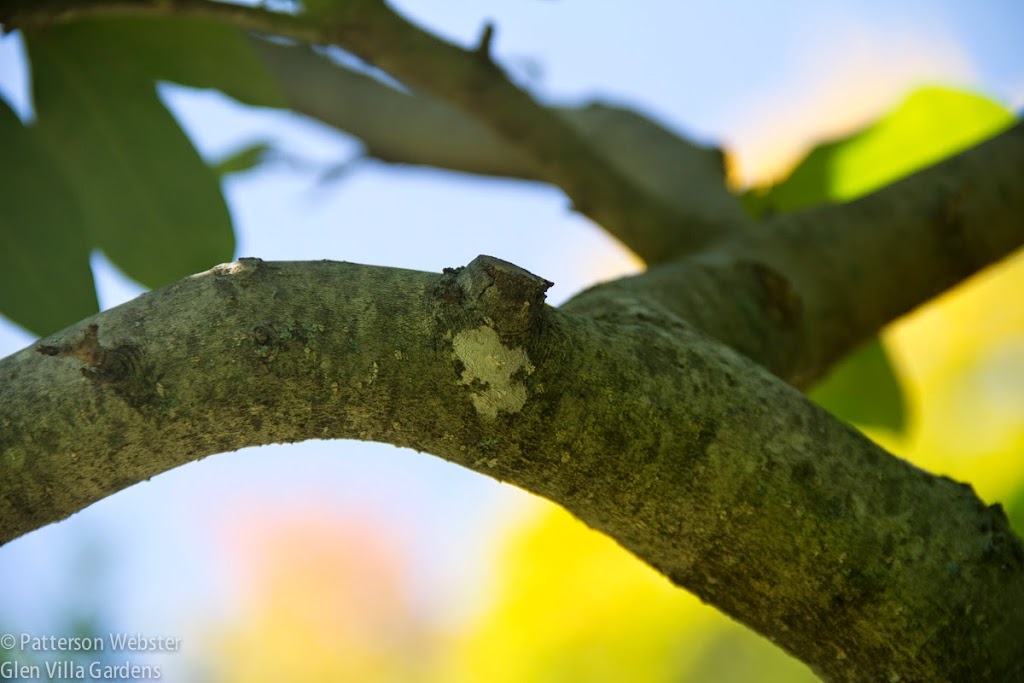 |
| The Bad: A fine example of a bad cut on one of the magnolias in the Lower Garden. |
A stem cut is used to balance and shape a shrub. Jeff removed one small branch from the magnolia to reduce the weight on a limb. He angled his cut to encourage growth in the direction I wanted the shrub to grow. Which wasn’t towards the centre of the shrub. Removing those limbs or others that are crossing one another is basic Pruning 101 — and a helpful review of basic principles.
There are dozens of on-line sites about pruning, and more dozens of books. When to prune a particular type of shrub, how to prune it, and why are questions that require detailed answers that I won’t try to cover. But I know this: pruning is necessary as well as fun. It maintains the health of a plant, encourages particular traits of the plant — denser hedges or more flowers, for instance — and keeps the shrub safe, for people and property.
Jeff looked at several plants in the Lower Garden and, to my delight, demonstrated how to rejuvenate an aging beauty, seen below growing atop the stone wall in the Lower Garden. The photo is from 2005, in the spring that followed a major overhaul of the area.
 |
| With magnolia in bloom and grass beginning to green up, the Lower Garden looked to be in good shape in 2005. |
The shrub Jeff used as a demonstration is a juniper (Juniperis horizontalis), shown below in a cropped version of the same photo.
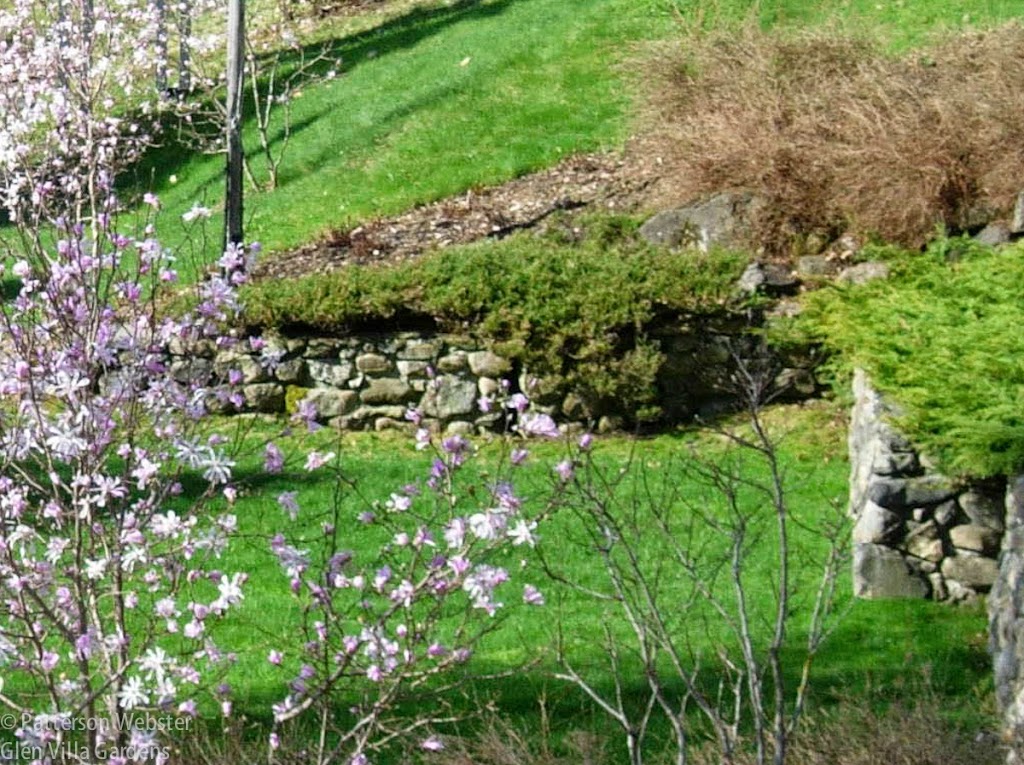 |
| The juniper is creeping over the wall quite nicely. Its dark green foliage provides a good contrast to the brighter green of the microbiota, on the wall to the right. |
The juniper is old; it was planted in the early 1970s by previous owners. But junipers are long-lived workhorse-type plants. In the course of the overhaul, when we were removing and re-locating what was there, I decided to leave the juniper where it was. Although it was overgrown, it was salvageable. In fact, it looked quite good after we had removed the dead wood underneath the green needles and untangled branches that were growing in odd directions.
For a few years, our work paid off. But by 2011 the shrub wasn’t looking so good.
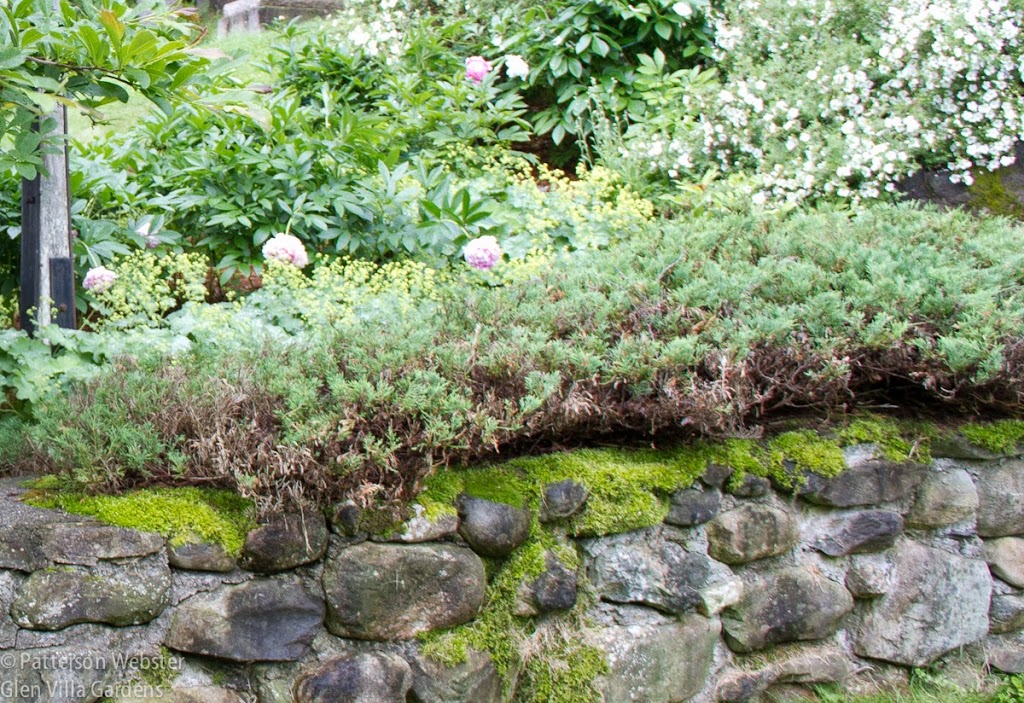 |
| Did I remove too much dead wood? Or did I cut off the long stems? |
Getting into the centre of these shrubs was a prickly business, so I succumbed to temptation, cutting the ends bits and leaving the centres to become more and more congested.
By this summer, the results of bad pruning and general neglect were all too evident. Dead wood appeared on all sides. And yet I still wanted to keep the shrubs: they were like venerable ancestors, whose presence added a sense of history to the garden.
Earlier this summer I started hacking away. Until the shrubs looked like this. Not pretty. Not healthy. Ugly, in fact.
 |
| The Ugly: This is how you never want a shrub to look: full of dead bits, out of balance, with bare holes. |
Was it time for them to go? No, Jeff said.
Ignoring the prickles, he began disentangling branches, working from underneath and pulling out long stragglers that retained a bit of green at the end. He made a few judicious stem cuts and left a branch hanging over the edge, as a demonstration. Next spring, when the juniper comes to life again, he said I’d see new growth. In another year or two, I’d be able to shorten the long branches, re-balance the shrub and shape it to hang over the wall just the way I wanted.
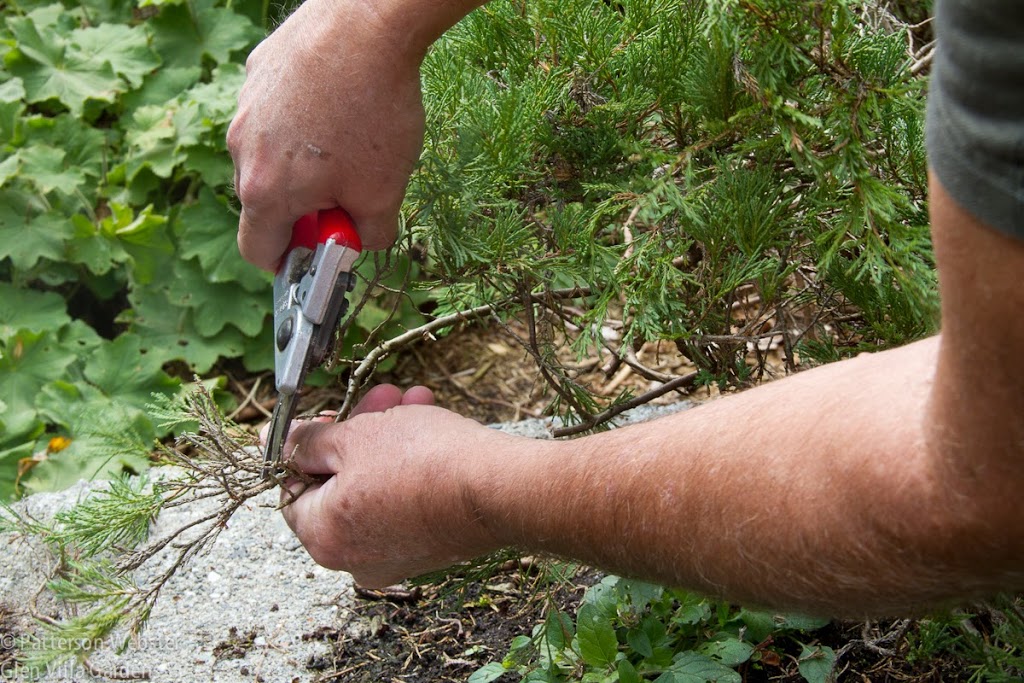 |
| I would probably have cut the whole branch back to the base. But Jeff showed me another approach. |
Jeff is a lilac specialist so getting him to comment on a nearby lilac bush was obvious. This old lilac, planted who knows how many years ago, cannot be rejuvenated, he said. It’s too far gone. But with judicious pruning, it can be improved.
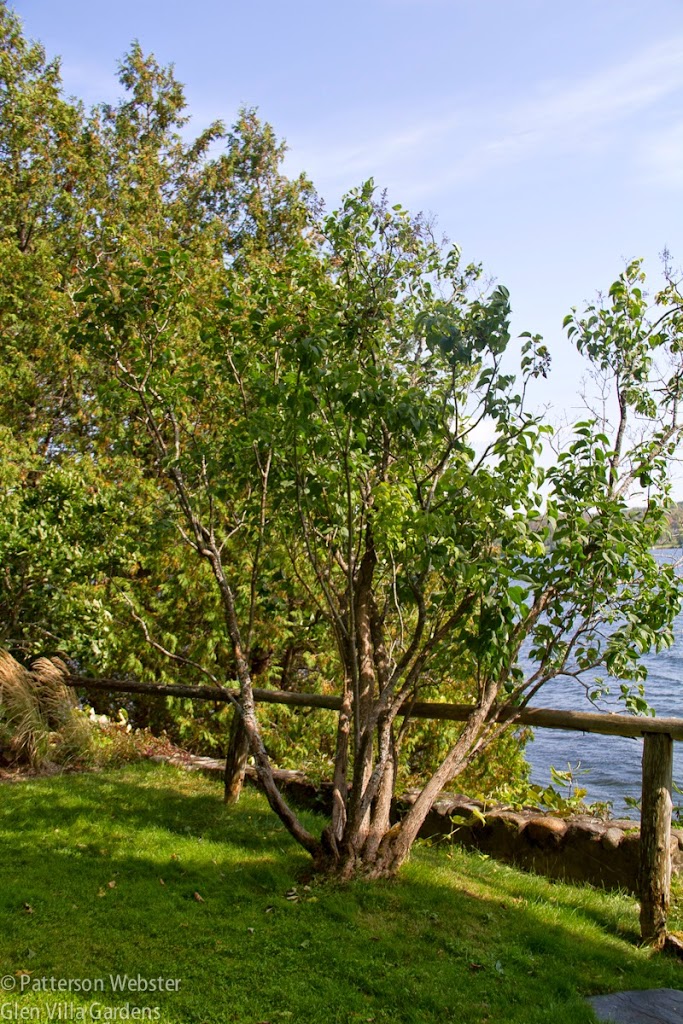 |
| This lilac could be 100 years old — maybe older. |
Early spring is the best time to prune many shrubs. A little later is best for lilacs, immediately after they flower. But with this old tree, timing is not crucial. It’s too cold to prune now, but on the first sunny day next spring, I may find myself in the Lower Garden, removing a large branch here, a smaller one there., with the goal of enhancing the shrub’s craggy qualities. I’ll go slowly, spend time on it. And doing that, I will give the venerable lilac the respect it deserves.
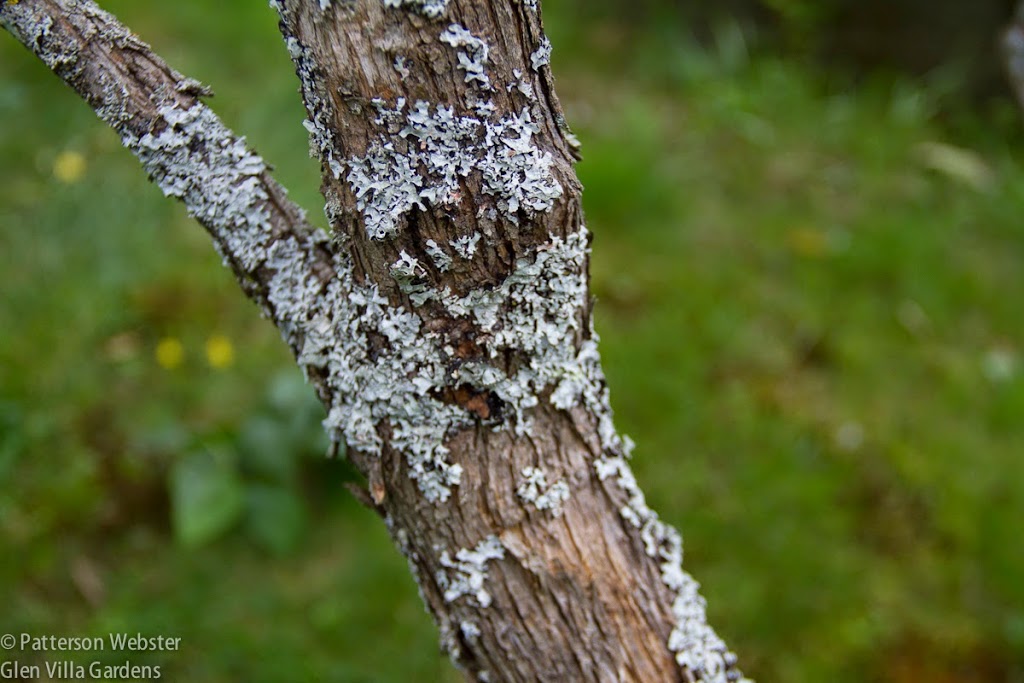 |
| Lichen on the branches reveals this lilac’s age and confirms that it is on its last legs. |
Determining the effect you want to achieve is a major element in the art of pruning. When done mindfully, pruning can be zen-like. Focusing tightly, you are present in the moment, fully aware of every twist of a branch. So keep your eyes out: next summer you may see photos here of a rejuvenated juniper, and a more shapely lilac.
Sooner than that, however, expect to see a revised version of this blog. Not The Good or The Bad or The Ugly, but The Better. Or so I believe. I’ve been working with the experts for a while now, and the new and improved version is almost ready for its launch.
More to come… soon!






And my new word of the day is “Lichen”!
You’re likin’ the lichen? (Groan).
Well, the title of this article is one of my favourite westerns you know, spaghetti and all!